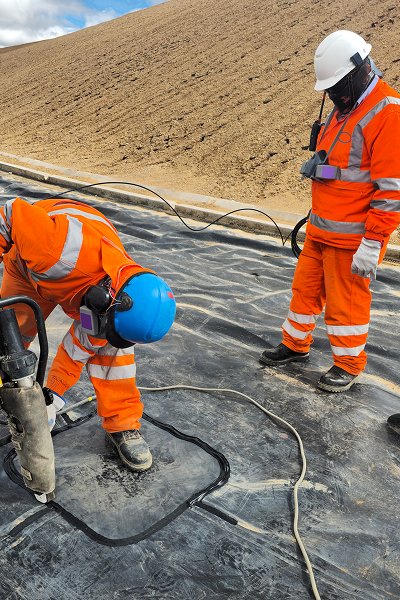Plastic Grass Grid, also known as "grass grid", "greening grid" and "ecological grass floor", is a honeycomb modular ground paving material made of high-density polyethylene (HDPE) or polypropylene (PP) through injection molding. It takes into account both bearing capacity and greening function, can effectively protect the roots of the lawn and prevent soil compaction, and has good drainage performance and ecological permeability.


Laying plastic grass grid
Planning
Determine the application scenarios: such as parking lots, green belts, driveways, etc.;
Clarify the load requirements: select grass grid models with corresponding load-bearing levels;
Drainage system design: cooperate with gravel layer and blind ditch system when necessary.
Plastic grass grid construction process
Base treatment
Excavate the foundation trench, the depth is generally 15-30cm depending on the project needs;
After leveling, compact the base to ensure that the whole is flat and there is no water accumulation;
Lay geotextile to prevent soil from floating and stabilize the structure.
Lay the cushion layer
Lay 10-20cm thick crushed stone or gravel to facilitate drainage and pressure sharing;
Use a compactor to roll multiple times to ensure uniform load bearing;
The compaction requirement of more than 95% must be met.
Grass grid laying
Lay the grass grid from one side of the site in turn, and the buckle connection is firm;
After each row is spliced, check the flatness with a level ruler;
When encountering corners or edges, you can use cutting tools to cut.
Filling and planting
Choose fillers according to the purpose:
Lawn type: fill with planting soil and sow or lay turf;
Driveway type: fill with gravel or pebbles;
Use manual or rollers to lightly press the filler to ensure stability.
Maintenance and acceptance
Lawn-type grass grids need to be watered and fertilized regularly to promote grass root growth;
Load test acceptance is carried out after the lane type is completed;
Check whether the edges and corners of the grass grid and the connection are firm and whether there is any looseness.
Typical Cases
Ecological Parking Space Project (Residential Community)
Project Scale: About 1,800 square meters
Grass Grid Model: 500mm×500mm×50mm, HDPE Material, Green
Design Requirements: Each parking space should carry ≤2 tons, and maintain a greening rate of ≥85%
Implementation Process:
The foundation is excavated to 25cm, and a gravel cushion layer + geotextile is laid;
Grass grids are laid neatly and then filled with mixed planting soil;
The surface is laid with turf that has been cultivated in advance, and it is officially put into use after 1 week of maintenance.

Maintenance and repair suggestions
Check the structural integrity regularly
Check whether the grass grid joints are loose or deformed;
If the edge is lifted or the buckle falls off, it should be repaired or replaced in time.
Surface cleaning and cleaning
If used in driveways and traffic areas, it is recommended to wash away the surface dust and sand every month;
Use a low-pressure water gun or a soft brush to avoid high temperature or strong acid and alkali corrosion of the material.
Prevent heavy objects from being dragged
Avoid dragging large machinery or metal objects directly on the grass grid to prevent the grid from being deformed or broken;
Use rubber wheels or take auxiliary board buffering measures.
Maintenance recommendations for non-grass-planted (gravel/sand) areas
Filling and compaction
Gravel areas may experience settlement or gaps during the rainy season or after frequent use;
Gravel should be replenished in time and re-compacted with compaction equipment to prevent structural instability.
Control weed growth
Environmentally friendly herbicides can be sprayed regularly to prevent grass from growing in gaps and destroying the beauty of the structure;
Anti-grass cloth can also be laid to enhance protection.
Plastic grass grids have strong durability and load-bearing performance, but a good user experience still requires careful and scientific maintenance. Whether used in ecological lawn areas or gravel roads, regular inspections and timely repairs can ensure that the structure does not deform, the appearance is not damaged, and the greening does not fade, thus achieving the goal of long-term use, green beauty and functionality.


